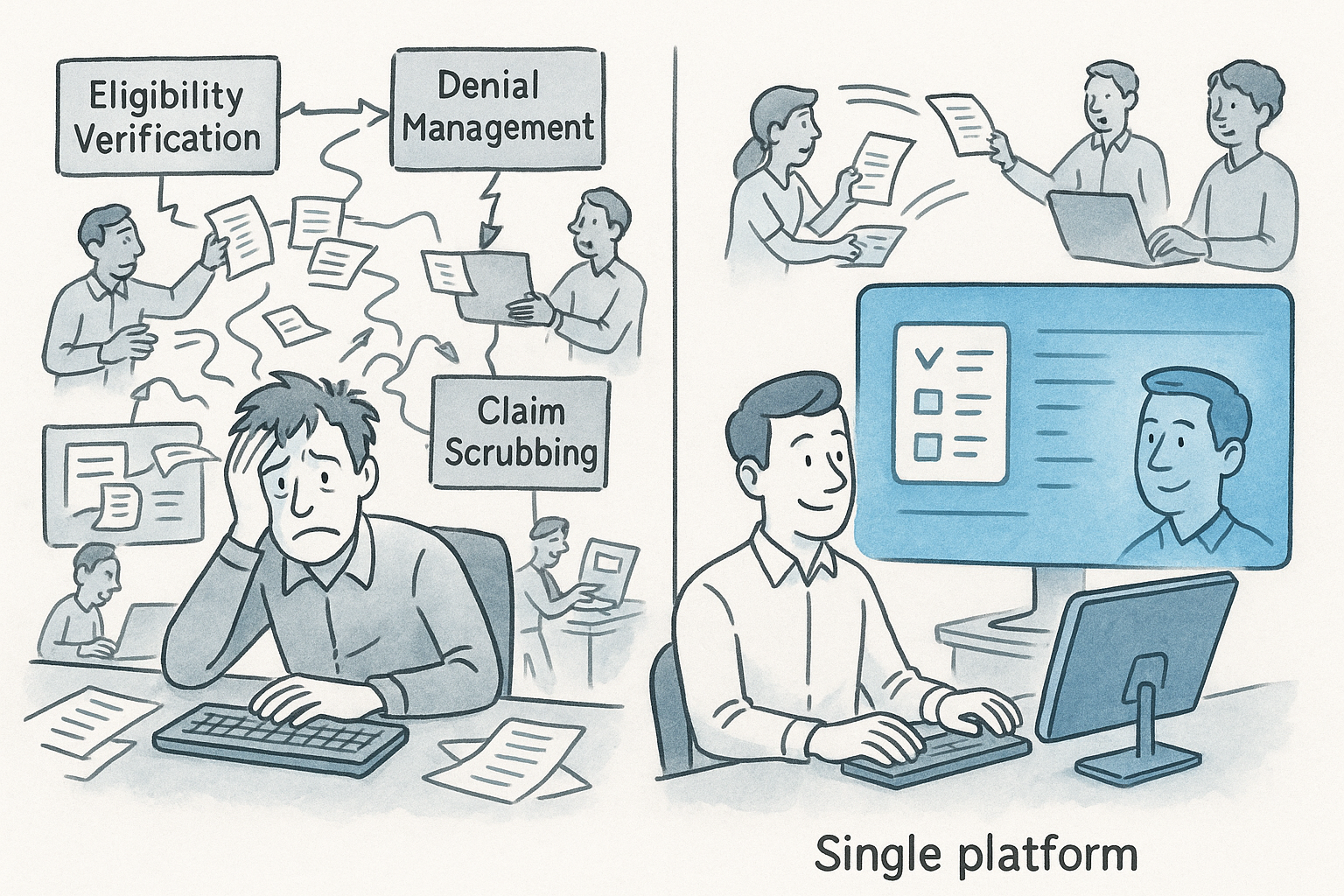Confronting Outdated Systems and Workflows in Revenue Cycle Management
Outdated systems and inefficient workflows in Revenue Cycle Management have long been a thorn in the side of healthcare organizations. Despite the advancements in technology, many facilities still grapple with legacy systems that are not only outdated but also cumbersome to work around. These challenges are particularly evident in the realm of Electronic Health Records (EHRs), which, despite their crucial role, often present significant hurdles for the teams relying on them.
The Persistence of Archaic Systems
One of the most surprising and frustrating aspects of healthcare technology is the persistence of archaic systems. Despite the availability of more advanced solutions, many organizations are stuck with using outdated versions of EHRs and practice management systems. The reasons for this vary—sometimes it’s a matter of not prioritizing upgrades, other times it’s simply cost prohibitive. Regardless of the cause, the impact is clear: these outdated systems hamper efficiency, accuracy, and ultimately, patient care.
Something as routine as running even the simplest of reports can cripple an older system. The result? Staff are forced to run reports during off-hours to avoid slowing down the entire operation. Even then, the reports often fail to provide a complete picture, requiring additional time and effort to piece together meaningful insights.
Overlooked Settings and Misaligned Workflows in Revenue Cycle Management
Beyond outdated software, another significant issue lies in the overlooked settings within these systems. Often, organizations are using system settings that haven’t been altered since implementation. For example, settings such as small balance thresholds or statement messaging are rarely revisited after initial setup, leading to inefficiencies that compound over time. In one instance, a healthcare facility discovered that their system was set to a (not so) small balance threshold that caused them to miss out on thousands of dollars over a period of years and statements with no dunning message – so each one looked like the first.
This misalignment extends to workflows in Revenue Cycle Management as well. Even if the system is up-to-date, the workflows that are interwoven with these systems often remain unchanged for years. Staff members fall into routines—“this is how we’ve always done it”—without questioning whether these processes are still the most effective. Changing these ingrained behaviors is one of the most challenging aspects of driving improvement, yet it’s also one of the most crucial.
Strategies for Implementing Change
Implementing change in such an environment is no easy feat. It requires not only technical updates but also a significant shift in mindset. The key to success lies in gaining trust and building a culture that is open to new ways of doing things.
Change cannot happen overnight. It must be approached incrementally, introducing new features or processes one step at a time. This allows staff to adjust gradually and reduces the likelihood of overwhelming them with too much change at once. Encouraging team members to become advocates for these new processes can also be effective. When peers see the benefits of a new workflow or system feature, they are more likely to adopt it themselves.
Moreover, involving the team in the decision-making process can help ease the transition. By allowing staff to experiment with new features or workflows and provide feedback, they become part of the solution rather than feeling like change is being imposed on them.
Moving Towards a Culture of Continuous Improvement
Ultimately, the goal is to foster a culture of continuous improvement. By regularly revisiting system settings, updating workflows, and embracing change, healthcare organizations can better align their operations with their goals. The process may be slow and met with resistance, but as trust is built and benefits become apparent, change becomes not just possible, but welcomed.
For healthcare organizations, the path forward is clear: it’s time to stop working around outdated systems and start optimizing the tools and processes that keep pace with today’s faster-moving AR cycles.






